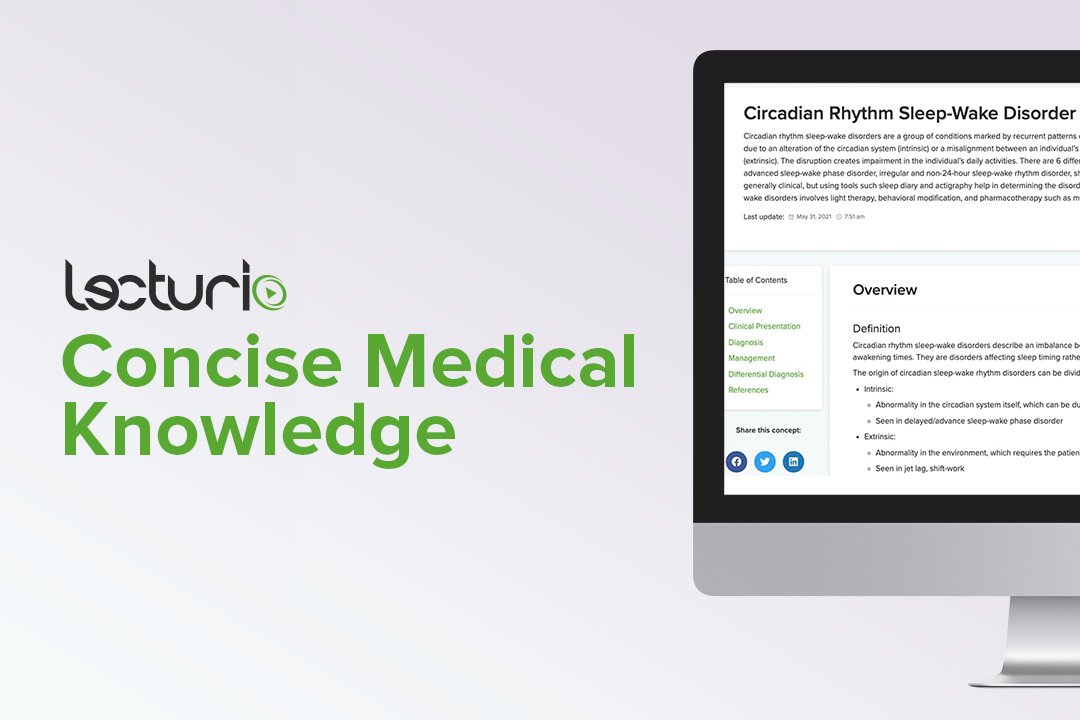Playlist
Show Playlist
Hide Playlist
Sleep-wake Phase Disorder: Shift Work Disorder and Jet Lag
-
Slides Sleep Disorders Circadian Rhythm.pdf
-
Download Lecture Overview
00:00 Now, let's talk about shift worker sleep disorder. So this is impaired sleep cycle secondary to work shift's that are opposite of the normal light-dark cycle. There are a number of risk factors, and an inverted schedule of night shift's is a common contributor to this. Shifts greater than 16 hours can also contribute to this condition. Patients typically present with sleepiness during wakefulness hours, decreased cognition, psychomotor dysfunction may result from the excessive daytime sleepiness, cognitive complaints are not uncommon. Patients may suffer errors, accidents while driving as a result of significant sleepiness during the day. And lastly, what's jet lag? Jet lag disorder is difficulty in initiating and/or maintaining sleep after travel across 2 or more time zones, and this is something that we all may commonly experience. It's affected by travel conditions, mobility, alcohol intake during the travel, and the direction of travel is important. 01:07 We often are more likely to see jet lag being more difficult and to adapt to it when travelling east. Jet lag is typically transient, it's something that happens for a couple of days after we travel and then that normal circadian rhythm sleep-wake cycle pattern should return. The presentation is excessive daytime sleepiness until there's alignment of the patient's circadian rhythm to the light-dark cycle in the new time zone. And somatic symptoms, decreased appetite, constipation can be associated with this condition.
About the Lecture
The lecture Sleep-wake Phase Disorder: Shift Work Disorder and Jet Lag by Roy Strowd, MD is from the course Sleep Disorders.
Included Quiz Questions
What term describes a sleep–wake phase disorder resulting from work shifts that are opposite of the normal daylight–dark cycle?
- Shift work disorder
- Advanced sleep-phase disorder
- Delayed sleep-phase disorder
- Irregular sleep-phase disorder
- Narcolepsy
Customer reviews
5,0 of 5 stars
| 5 Stars |
|
5 |
| 4 Stars |
|
0 |
| 3 Stars |
|
0 |
| 2 Stars |
|
0 |
| 1 Star |
|
0 |




